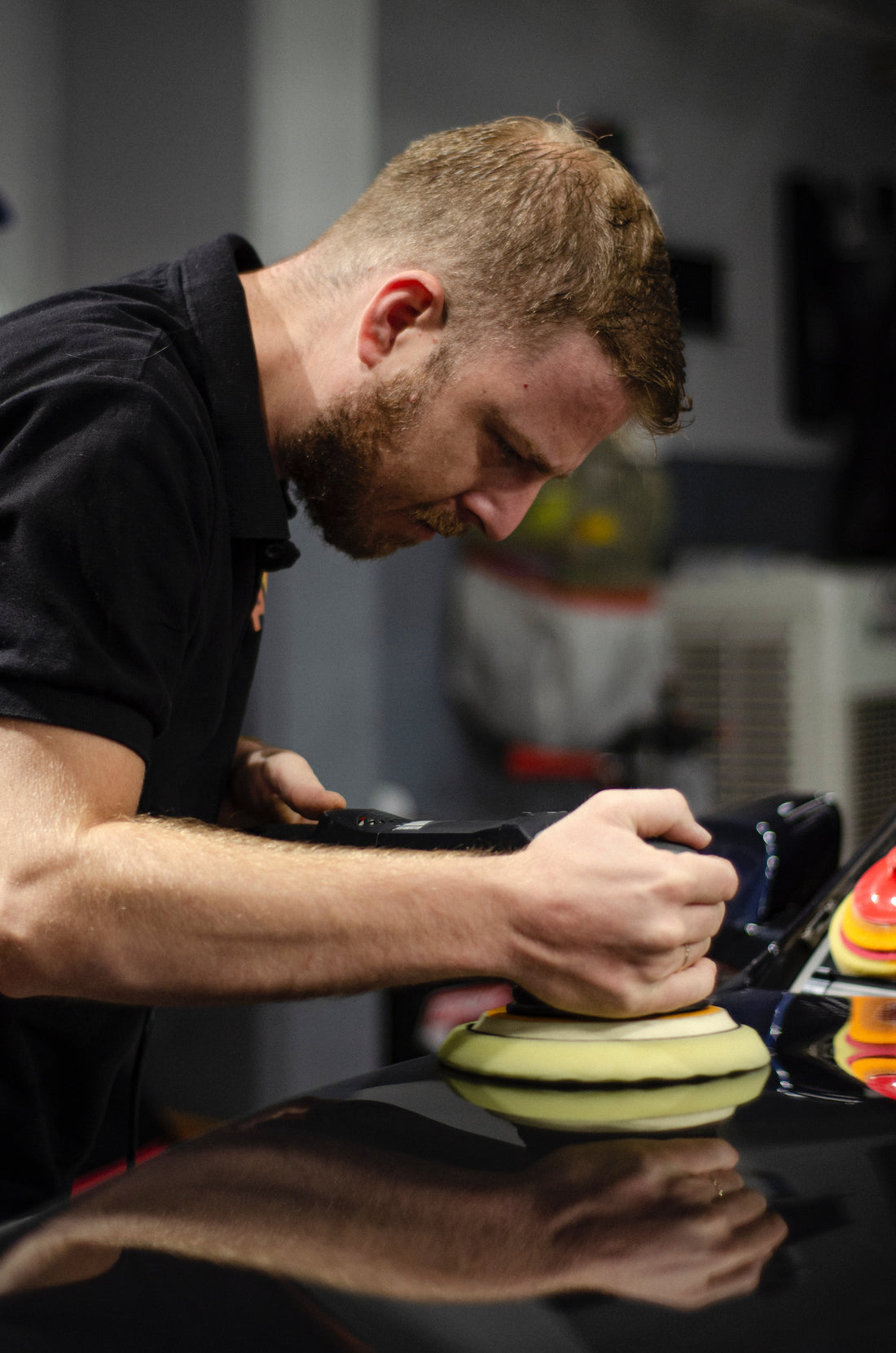
The Ultimate Guide to Plane Detailing
Share
Detailing the exterior of an airplane requires careful attention to detail and proper techniques to ensure the safety of the aircraft's surfaces. Here's a step-by-step guide on how to safely detail the exterior of a plane:
-
Gather Supplies:
- Aviation-approved surface cleaner
- Soft microfiber towels or aircraft-approved cleaning cloths
- Detailing brushes (soft bristle)
- Aviation-approved protectant (if needed)
- Water source with hose (if allowed)
- Buckets
- Step ladder or platform (if necessary)
- Gloves and eye protection
-
Preparation:
- Choose a shaded or covered area to work in.
- Make sure the aircraft's surfaces are cool to the touch.
- Remove any loose debris, insects, or dirt using a gentle wash spray with lubricant and scrub gently with a clay bar.
-
Cleaning:
- Wet a microfiber towel or cleaning cloth with the diluted cleaner and gently wipe down a small section of the aircraft's surface.
- Work in small sections to prevent the cleaner from drying on the surface.
- Use gentle, straight-line motions to wipe away dirt and grime. Avoid circular motions that can create swirl marks.
- If you encounter stubborn contaminants, use a soft-bristle detailing brush or a lubricated clay bar to gently agitate the area.
-
Rinsing:
- Rinse the cleaned section using a gentle stream of water. Avoid high-pressure washers, as they can damage sensitive areas.
- Make sure to thoroughly rinse away any remaining cleaner.
-
Drying:
- Use a clean, dry microfiber towel to pat the surface dry. Avoid wiping, which can potentially scratch the surface.
-
Polishing and Protecting (if needed):
- If your aircraft's finish allows for polishing, use an aviation-approved spray such as this one found online https://machcoatings.com/products/airplane-ceramic-spray
- Apply a small amount of detail spray to a clean, dry microfiber towel and work it into the surface using gentle, circular motions.
- Buff the surface with a separate clean and dry microfiber towel to remove any excess polish and reveal a glossy finish.
-
Windows and Windshields:
- Use an aviation-approved glass cleaner to clean windows and windshields.
- Spray the cleaner onto a microfiber cloth and gently wipe the glass surfaces. Avoid spraying directly onto the glass, as overspray can damage sensitive components.
-
Final Inspection:
- Once you've finished detailing the entire aircraft, step back and inspect your work.
- Check for any spots or areas that may need further attention.
-
Waste Disposal:
- Dispose of cleaning materials and waste properly according to local regulations and environmental guidelines.
Remember that aircraft surfaces can be sensitive, and improper techniques or using the wrong products can cause damage. Always refer to the aircraft manufacturer's guidelines and use aviation-approved products. If you're not comfortable detailing the aircraft yourself, consider hiring a professional aviation detailer who has experience and knowledge in working with airplanes. For more information visit

